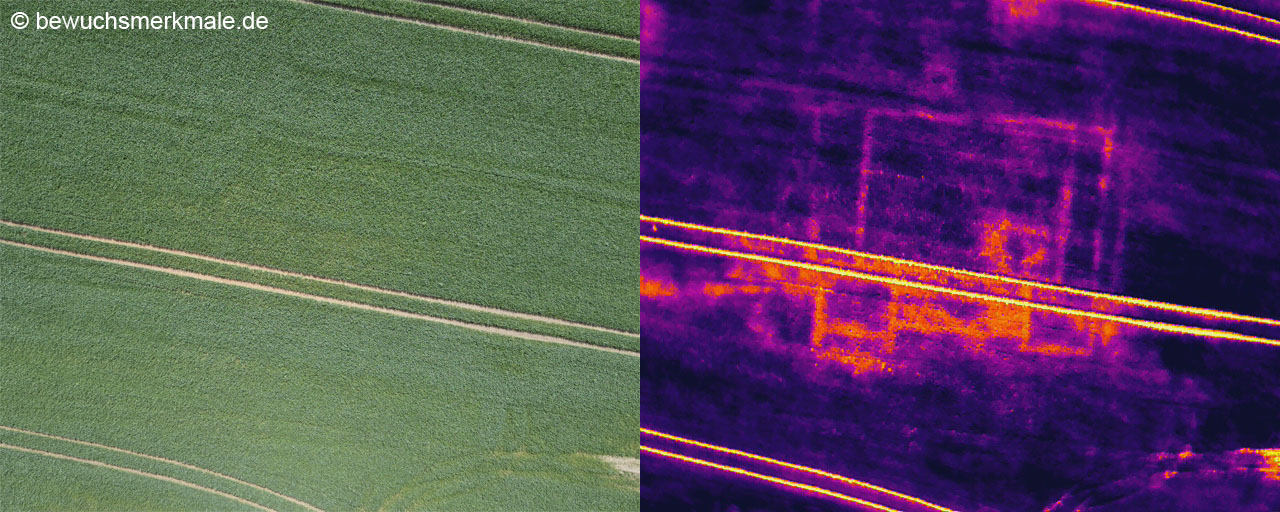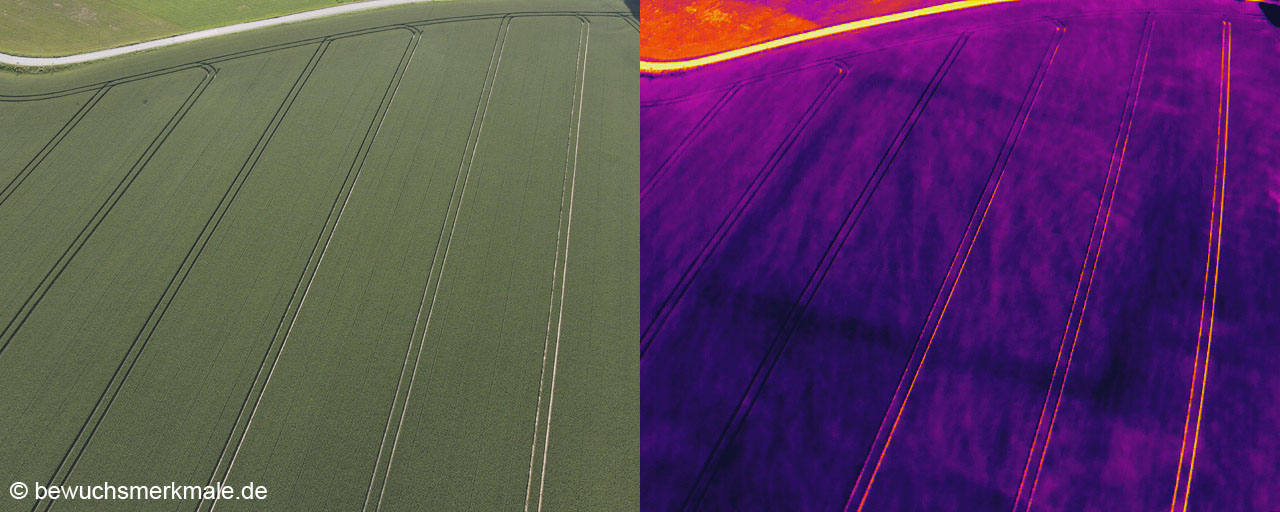Thermal characteristics without crop marks in winter wheat
The great advantage of thermal imaging is that even short-term temperature changes in plants can be visualised. For example, a brief dry spell can cause a rise in temperature in plants due to drought stress, but this does not lead to the development of crop marks.
Winter wheat is known for its detailed crop marks. This also applies to thermal characteristics. Even several hours of intense sunlight can lead to a slight temperature difference between plants with varying levels of nourishment. This difference cannot be detected with a standard camera, but a thermal camera can often capture it. In particular, wall remains in the ground can be made clearly visible in this way. The thermal camera is an outstanding tool, especially for detecting and documenting the remains of Roman farmsteads (villae rusticae).

However, even larger trench structures, such as Celtic square forts, can be made visible in a field of winter wheat using a thermal camera, even though normal photographs reveal nothing about the underground remains of these large structures. The plants growing on the former trench often have a better water supply and therefore warm up less quickly than their neighbouring plants during a heatwave. They therefore appear as darker, cooler areas in the thermal image.

